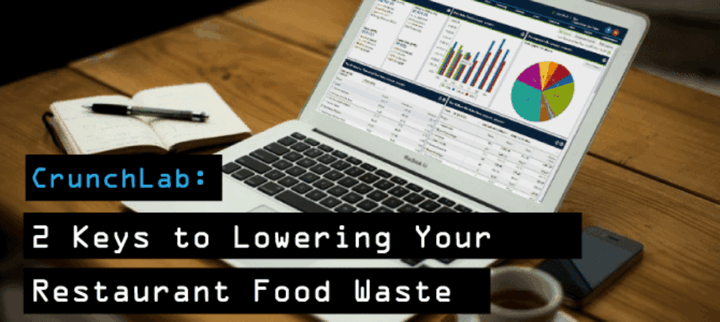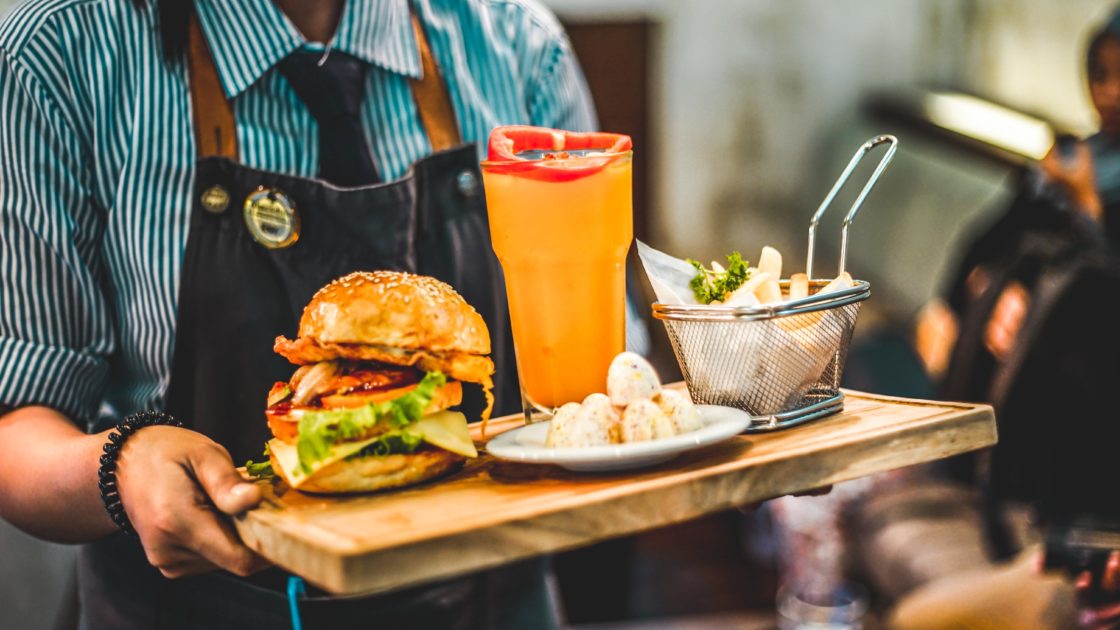
- Home
- Crunchtime Blog
- 4 Important Features of Restaurant Forecasting Software

4 Important Features of Restaurant Forecasting Software
Take your sales forecast to the next level with these must-have features
How accurately do you predict your restaurant's staffing needs? Do you regularly have spoilage from over-ordering inventory? Your sales forecast is pivotal to managing your daily restaurant operations.
If you're a growth-minded restaurant operator, you likely already understand the importance of your sales forecast and its impact across your operation. For all operators, an accurate sales forecast should work as a guiding light, helping you predict sales, inventory needs, staffing requirements and more.
But searching for the right forecasting software for your restaurant can feel overwhelming.There are many considerations that impact your forecasting needs and the quality of the forecast can also significantly impact your bottom line. Before you choose a sales forecasting software make sure you ask these questions about key features.
Ask these 4 feature-focused questions when exploring a new forecasting system
1. Does it provide multiple forecasting metrics?
Flexibility is key for fast-growing restaurant brands. The ideal restaurant forecasting software should allow operators to dig into the most relevant metrics for their business and customize the different inputs to meet the store's specific needs.
Typically, restaurant sales forecasts are created with historical sales data and then adjusted for current variables. But operators today need multiple ways to build their forecasts. Your forecasting software should be able to take many factors into account such as data, guest count, or transaction counts over a specified period.
Some operators may choose to use the prior four weeks’ data to view current trends. Other operators may want to look at the previous year’s data to help them account for holidays or seasonal changes. The more flexibility in the forecast, the more relevant and accurate the metrics will be.
2. Is the sales forecast integrated across all your necessary restaurant systems?
Your forecast can inform key operational decisions around inventory and labor, but when it is disconnected from your other systems, it can immediately start to lose effectiveness. If a user is constantly switching tabs, or switching screens to input the forecast from somewhere else, they can quickly introduce the risk for manual errors and start losing efficiency.
By directly integrating the forecast into your inventory and labor tasks, you can avoid preventable errors like under-staffing or over-ordering items. The forecasting system will automatically create an accurate prediction of your needs by analyzing your historical data, including inventory, ordering, recipes, labor schedules, and production systems. When you integrate this valuable data into your other systems, you unlock the ability for every store to level up their operations.
For your kitchen staff, the forecast can integrate with production modules and accommodate information as granular as hold times, thaw times, and the shelf life of products. This can easily make your BOH more productive and efficient.
When scheduling labor, a forecast that is directly integrated into the schedule builder can guide how many hours to staff each position. A turnkey solution can even suggest the exact number of hours to staff, making this process even faster and more accurate.
You can think of an integrated forecast as your all-knowing assistant for making smarter operational decisions. Even a manager who is new to the job can utilize an integrated forecast for enormous savings in time and money. As restaurant brands continue to grow their tech stack, it is more important than ever for data points to flow easily across systems.
Discover more strategies and tips for effective labor management in our full resource library
3. Can you automate back-of-house functions based on the sales forecast?
Automating tasks can help keep your managers out of the back office, and give them more time to spend focusing on guests. Your sales forecasting solution should allow you automate numerous tasks such as:
- Automate Inventory Orders– A fully integrated forecasting system should connect to your menu data and real-time sales. When quantities of an item start to low, the system can automatically place an order with your approved vendors. This will quickly save you time, money and ensure that the restaurant is fully stocked and ready for each guest that walks through the door.
- Automatic Scheduling – Look for a solution that can use your forecast to automatically fill vacant shifts on your schedule with team members who are available and qualified with the right skill set. A smart solution can even allow you to rank your team members so you can trust that your automatically generated schedule will be staffed for success. With less time spent scheduling, your restaurant managers will have more time to build and grow the operation.
- Food Prep and Production – Select restaurant forecasting software that integrates with your inventory management tools to map out preparation and production schedules for the week, day, shift, hour or prep station to reduce the potential for food shortages or waste.
Selecting restaurant forecasting software that can automate back-of-house functions gives restaurant operators an employee that’s always on the job.
4. Does your forecast produce detailed specs in real-time? What about in 15-minute intervals?
Restaurant forecasting software can vary greatly in how detailed a forecast the user can generate. Some software will generate weekly or daily sales forecasts, while more advanced systems can generate hourly sales forecasts or even forecasts in 30- or 15-minute increments.
The ability to break down your forecast by hourly and incremental periods is enormously helpful in settings where traffic tends to come in concentrated bunches, like a restaurant that has a heavy lunch rush.
In addition to providing real-time forecasting, advanced forecasting software that integrates with prep and production modules may accommodate information as granular as hold times, thaw times and shelf life of products. The result is just-in-time menu production that reduces waste to an absolute minimum and still meets expected demand.
Bonus Question: Can the forecast accommodate holidays and special events?
Holidays and special events can easily throw your operation into a tailspin. When the store is understaffed or low on inventory when a big rush comes through the doors, there is a high probability the guest experience will be degraded and employee morale can drop. If you simply assume that your managers will remember important calendar dates and know how to staff and order inventory appropriately, you're missing an opportunity to improve the operation.
Past behavior is the best predictor for future behavior, when it comes to restaurant sales. When forecasting around holidays or events, your restaurant's forecasting system should allow you to choose a specific date, or week from the past to drive your forecast. This way, you can select the past date that an event fell on and drive a more accurate forecast. Holidays can change from year-to-year, which means choosing the same exact date from the prior year will not always work. For instance, Mother's Day fell on May 14 last year but is slated for May 12 this year.
By enabling managers to select the specific date from the previous year's data, forecasts can be tailored to the correct sales data. Without this customization option, it can be easy to misalign the forecast, or even forget a holiday altogether. Your restaurant forecasting system should also allow you to leave notes about special events. While major holidays like New Years and Valentines Day are on everyone's calendars, smaller events and holidays can easily go forgotten. By leaving notes in the calendar, you can make sure that managers are fully aware when events come around and information is shared equally among everyone.
Final Thoughts
To create an accurate model of your future sales, forecasting requires the most timely, relevant data available. A sales forecasting system that integrates with your food and labor operations can provide your managers with the key metrics they need to predict the store's future needs and minimize costs. Imagine, no more under-staffed shifts, and you always have just enough inventory to keep your menu full and your customers happy. With the right tools, forecasting can become your restaurants' greatest strength.
Ready to improve your sales forecast?
Let's get in in touch and we'll show you how an integrated forecasting solution can increase your restaurant's profits and elevate the guest experience.
Share this post
Related


How Technology Helps the Restaurant Industry
-1.jpeg?length=720&name=AdobeStock_260525795%20(1)-1.jpeg)
